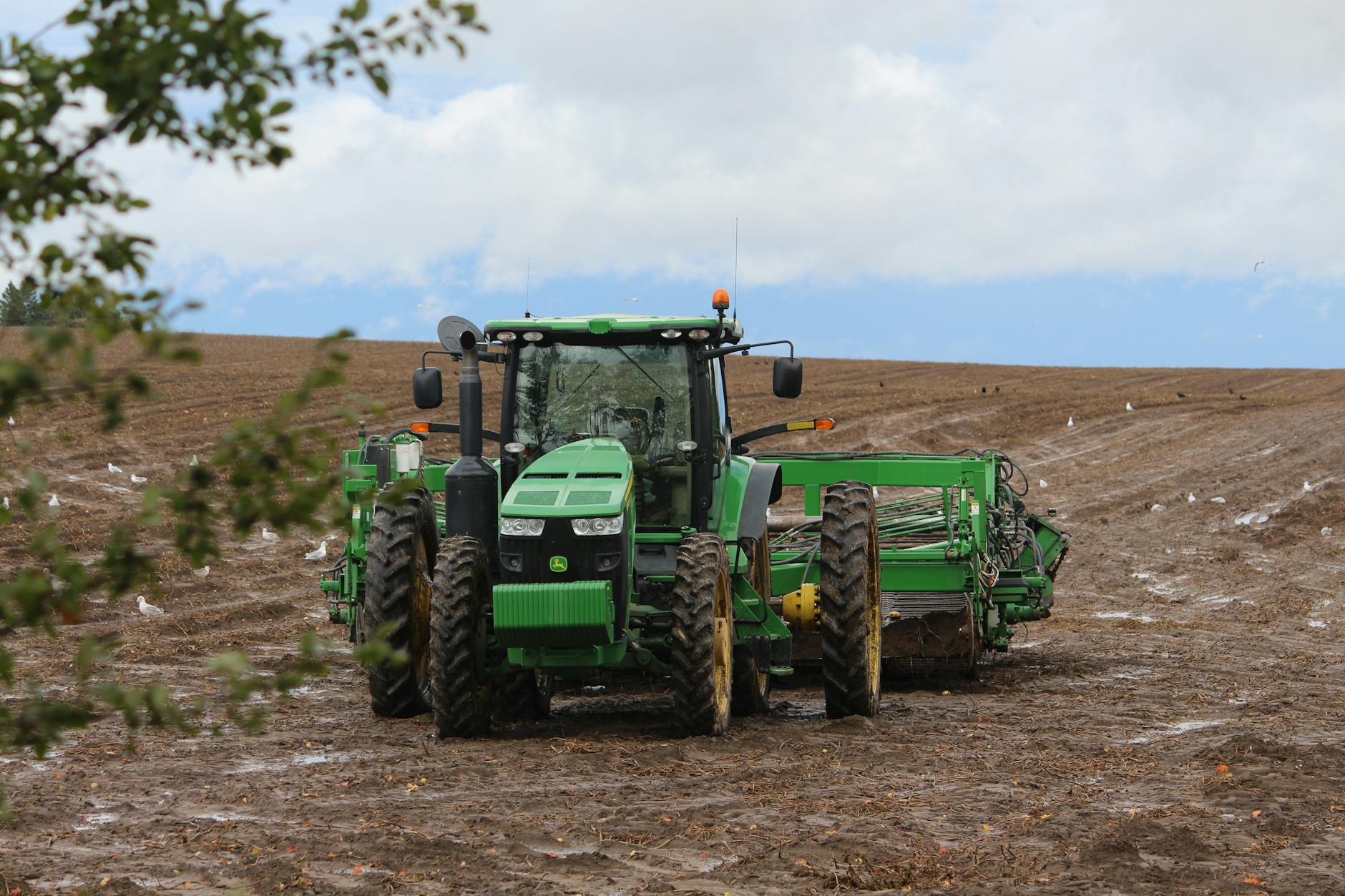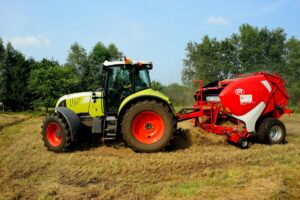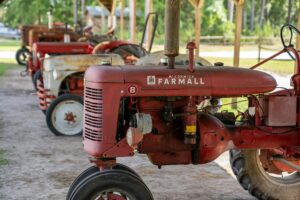Tractors are the backbone of modern agriculture and landscaping, but understanding Tractor specifications can be a daunting task. With many models, features, and configurations available, deciphering a tractor’s specifications is key to finding the right machine for your needs. Whether you’re a seasoned farmer or a first-time buyer, this guide will help you navigate the world of tractor specifications and make an informed decision.
Why Tractor Specifications Matter
Tractor specifications go beyond technical jargon they define the machine’s capabilities, performance, and compatibility with your tasks. Knowing how to interpret these specs ensures that you select a tractor suitable for your operations, whether it’s cultivating crops, hauling loads, or maintaining a lawn.
Understanding Key Tractor Specifications
Here are the essential specifications you’ll encounter when evaluating tractors:
1. Horsepower (HP)
Horsepower measures the tractor’s power output and is one of the most critical specifications.
- Engine Horsepower: Indicates the engine’s total power.
- PTO Horsepower: Refers to the power available to run attachments like mowers, balers, and tillers.

Rule of Thumb:
- 15–25 HP: Suitable for small gardens and residential tasks.
- 25–50 HP: Ideal for medium-sized properties and light farming.
- 50–100 HP: Best for larger farms with more demanding applications.
2. Engine Type
Most modern tractors use diesel engines due to their fuel efficiency and torque. Engine specs typically include:
- Cylinders: More cylinders provide smoother operation and higher power output.
- Turbocharged Engines: Deliver increased power without sacrificing efficiency.
3. Transmission
The transmission determines how power is delivered from the engine to the wheels.
- Manual Transmission: Provides precise control and is cost-effective but requires more skill.
- Hydrostatic Transmission: Offers smooth, automatic operation, making it beginner-friendly.
- Continuously Variable Transmission (CVT): Combines the benefits of manual and hydrostatic systems, allowing seamless speed adjustments.
4. Hydraulics
Hydraulic systems control lifting, lowering, and powering implements.
- Hydraulic Flow Rate (GPM): A higher flow rate ensures faster and more efficient operation of attachments.
- Number of Hydraulic Ports: Determines the number of attachments you can connect simultaneously.
5. Power Take-Off (PTO)
The PTO enables the tractor to transfer power to implements.
- PTO Types:
- Mechanical PTO: Engaged manually, simple but less efficient.
- Live PTO: Independent operation even when the tractor is stationary.
- Independent PTO: Allows on-the-go engagement and disengagement without stopping the tractor.
PTO Horsepower: Match the PTO horsepower to the attachment requirements for optimal performance.
6. Dimensions and Weight
A tractor’s size and weight influence its stability, maneuverability, and suitability for specific tasks.
- Wheelbase: Longer wheelbases provide better stability, especially on rough terrain.
- Overall Weight: Heavier tractors are better for traction-intensive tasks like plowing but may damage soft soil.
7. Tires and Traction
Tractor tires are categorized by their tread design and function.
- Agricultural Tires (R1): Provide maximum traction for fieldwork.
- Industrial Tires (R4): Versatile, durable, and suitable for mixed-use.
- Turf Tires: Designed for minimal ground disturbance, ideal for lawns and gardens.
Traction control features like four-wheel drive (4WD) enhance performance on uneven or muddy terrain.
8. Fuel Capacity
A larger fuel tank reduces the frequency of refueling, which is essential for long working hours. Compare fuel efficiency and tank capacity when selecting a tractor.
9. Hitch Types and Lifting Capacity
Hitches connect tractors to implements and are classified by categories:
- Category 0: Small implements for sub-compact tractors.
- #Category 1: Standard for compact and utility tractors.
- Category 2 and Higher: Designed for larger tractors and heavy-duty implements.
The lifting capacity determines the maximum weight the hitch can manage, ensuring compatibility with your implements.
10. Technology and Features
Modern tractors come with advanced technology to enhance productivity and comfort.
- GPS and Precision Farming: Automates tasks like planting and spraying.
- Telematics: Monitors performance remotely.
- Ergonomic Features: Air-conditioned cabs, adjustable seats, and user-friendly controls reduce operator fatigue.
Decoding Tractor Model Numbers
Tractor model numbers often provide clues about their specifications. For example:
- John Deere 5075E:
- “50” indicates the series.
- “75” represents engine horsepower.
- “E” denotes an economy model.
Different manufacturers have unique naming conventions, so check their guides for clarity.
Comparing Tractor Specifications by Use Case
Small Gardens and Lawns
- Recommended Specs:
- 15–25 HP
- Turf tires
- Hydrostatic transmission
- Example Model: Kubota BX1880 – Compact, user-friendly, and perfect for residential use.
Medium-Sized Farms
- Recommended Specs:
- 40–60 HP
- Agricultural tires
- Live PTO and multiple hydraulic ports
- Example Model: New Holland Workmaster 55 – A versatile utility tractor for diverse tasks.
Large Farms
- Recommended Specs:
- 100+ HP
- Four-wheel drive
- Advanced hydraulics and precision farming technology
- Example Model: John Deere 8R Series – High-tech and powerful for demanding operations.
Construction and Industrial Work (Tractor specifications)
- Recommended Specs:
- 70–150 HP
- Industrial tires
- High hydraulic flow rate
- Example Model: Case IH Maxxum Series – Durable and efficient for heavy-duty tasks.
How to Evaluate Tractor Specifications
- Define Your Needs Identify the primary tasks and the conditions of your property (terrain, soil type, etc.).
- Check Compatibility with Attachments Ensure the PTO horsepower and hitch category match your existing or planned implements.
- Test Drive Visit dealers to experience the tractor’s performance, comfort, and ease of operation firsthand.
- Consider Resale Value Tractors from reputable brands with durable specifications retain their value better over time.
Common Mistakes to Avoid When Analyzing Specifications
- Overestimating Needs Buying a larger or more powerful tractor than required can result in unnecessary costs.
- Ignoring Maintenance Costs Advanced features often require specialized maintenance, so factor this into your budget.
- Overlooking Ergonomics Long hours in an uncomfortable tractor can lead to fatigue and decreased productivity.
- Neglecting Dealer Support A reliable dealer network ensures timely repairs and access to spare parts.
Conclusion
Understanding tractor specifications is essential for selecting a model that aligns with your needs and budget. By focusing on factors like horsepower, transmission, hydraulics, and tire types, you can evaluate which tractor will perform best for your specific tasks. Whether you’re maintaining a small garden or managing a sprawling farm, the right tractor equipped with the right specifications can transform your work experience.
Take the time to research, compare, and test different models. With this ultimate guide, you’re now better prepared to navigate the complex world of tractor specifications and invest in a machine that will serve you well for years to come.



